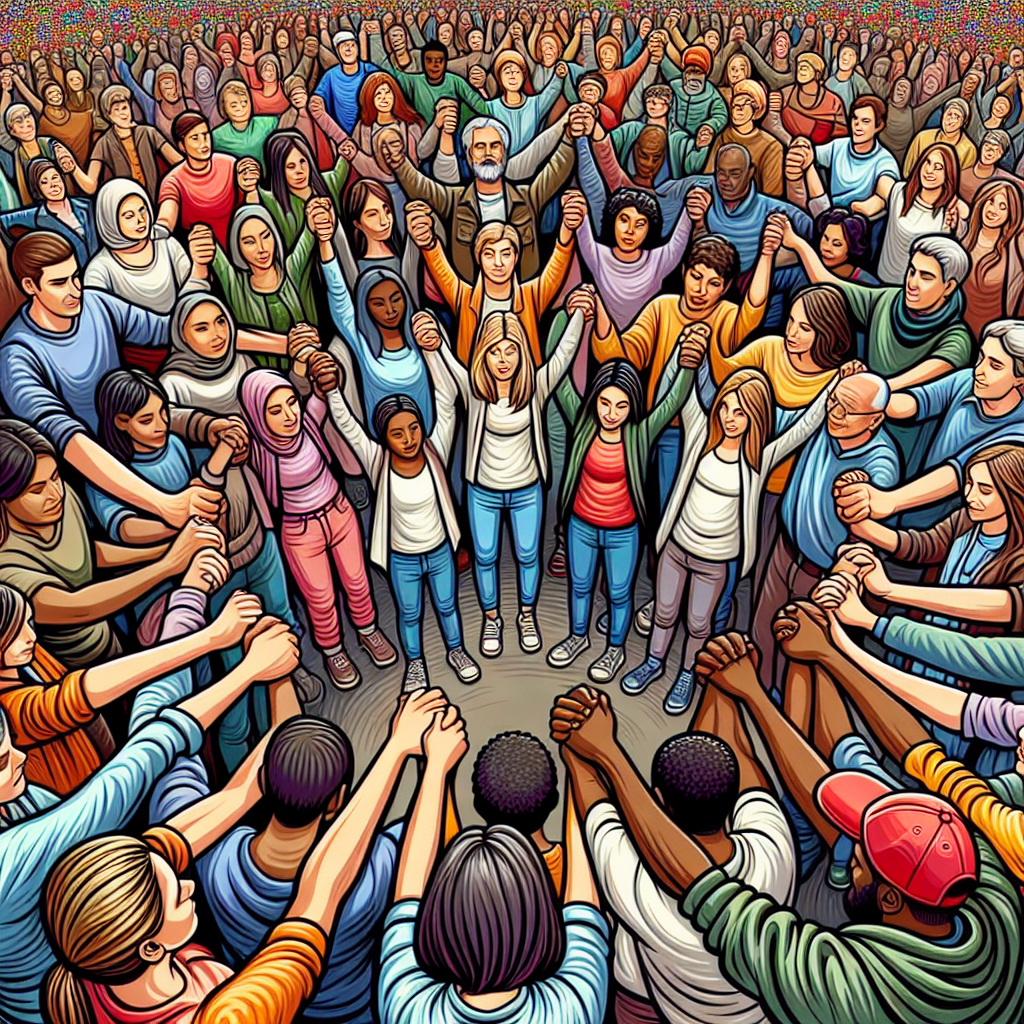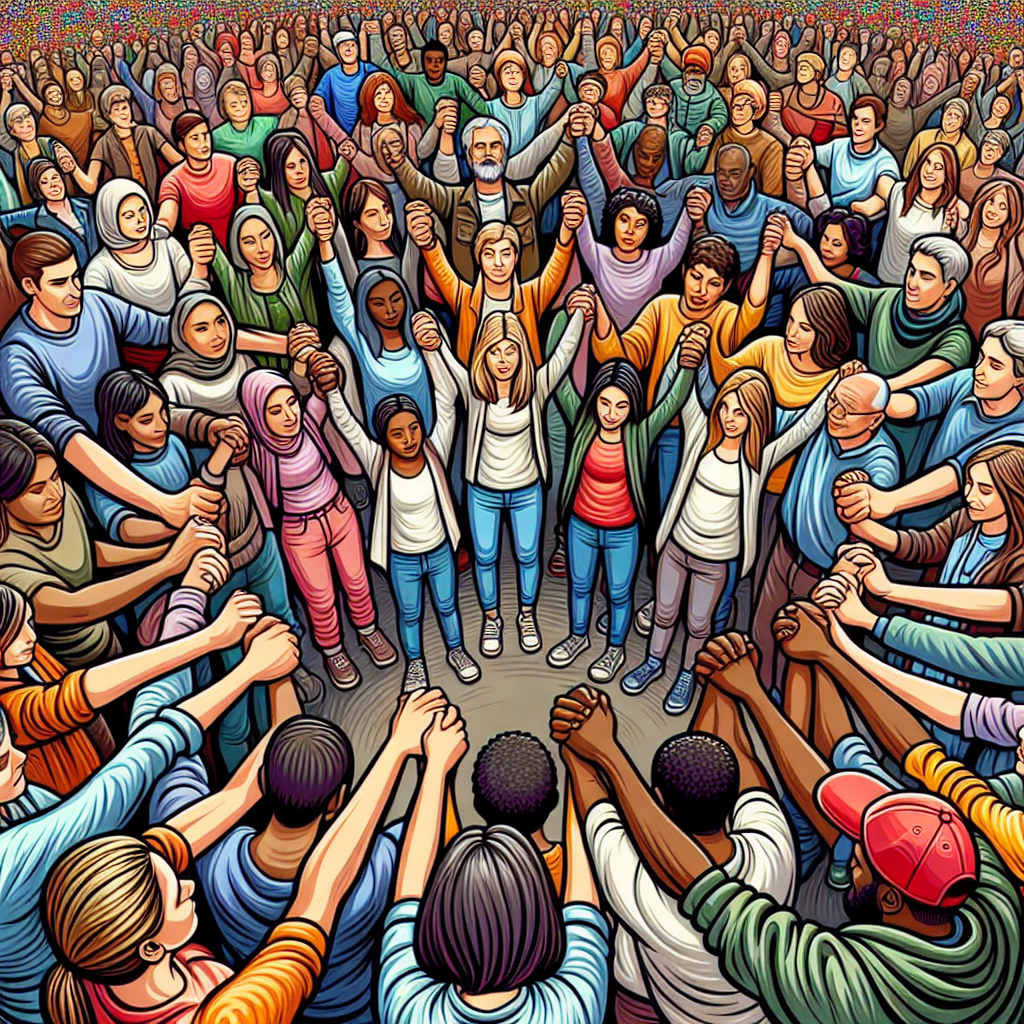What Role Does Community Play In Building Resilience?
In today’s interconnected world, it is becoming increasingly important to understand the role that community plays in building resilience. Whether it is facing personal challenges or larger societal issues, having a strong and supportive community can make all the difference. By coming together, sharing experiences, and offering a helping hand, communities create a powerful force for resilience. This article explores the impact of community on building resilience and highlights the key factors that contribute to its strength.
Understanding Resilience
Resilience can be defined as the ability to bounce back or recover quickly from difficult or challenging situations. It is the capacity to adapt and navigate through adversity, finding strength and positive outcomes even in the face of adversity. Resilience is essential for both individual and community well-being, as it allows individuals and communities to effectively cope with stressors, maintain their mental health, and thrive despite the challenges they may face.
The Role of Community in Building Resilience
Communities play a vital role in building resilience as they provide a supportive and nurturing environment that fosters well-being and helps individuals develop resilience skills. A strong sense of community can greatly contribute to the overall resilience of individuals within that community. Here are some ways in which communities can build resilience:
Strong Social Support Networks
One of the key factors in building resilience is the presence of strong social support networks within a community. These networks consist of family, friends, neighbors, and other community members who offer emotional support, practical assistance, informational support, and social companionship during times of need.
Emotional Support
Emotional support involves providing a safe space for individuals to express their feelings and emotions, offering a listening ear, and showing empathy and understanding. This support helps individuals feel validated and less alone, reducing stress and contributing to their overall well-being.
Practical Assistance
Communities can offer practical assistance to individuals facing adversity, such as helping with household tasks, childcare, or financial support. This practical help can alleviate some of the burdens individuals face and contribute to their ability to bounce back from challenges.
Informational Support
Communities can provide individuals with the necessary information to navigate through difficult situations. This can include sharing knowledge about available resources, providing guidance on problem-solving, and offering advice and suggestions based on personal experiences.
Social Companionship
Having social companionship is crucial for resilience. Communities can organize social activities and events that bring individuals together, fostering a sense of belonging and connection. These interactions provide opportunities for individuals to build and strengthen their social support networks, enhancing their overall resilience.
Promotion of Collective Efficacy
Collective efficacy refers to a community’s shared belief in its ability to come together and effectively address challenges. Building collective efficacy involves nurturing trust and cooperation among community members and promoting collaborative problem-solving.
Building Trust and Cooperation
Trust and cooperation are essential components of collective efficacy. When individuals trust and cooperate with one another, they are more likely to work together towards common goals, share resources, and support each other during difficult times. Trust can be built through open communication, transparency, and the fostering of a culture of respect within the community.
Collaborative Problem-Solving
Communities can engage in collaborative problem-solving, where individuals work together to find solutions to challenges that affect the community as a whole. This approach allows for diverse perspectives, innovative ideas, and collective decision-making. Collaborative problem-solving empowers individuals and fosters a sense of ownership and responsibility for the community’s well-being and resilience.
Increased Sense of Empowerment
Through collective efficacy, individuals within a community gain a greater sense of empowerment. They feel a shared responsibility and are motivated to take action, contributing to the community’s resilience. This empowerment helps individuals develop a proactive mindset and overcome adversity with confidence and determination.
Sense of Belonging and Identity
A strong sense of belonging and identity within a community is a powerful factor in building resilience. It provides individuals with a supportive and nurturing environment where they can draw strength, find acceptance, and develop a positive sense of self.
Creating a Sense of Community
Communities can create a sense of community by cultivating inclusion and fostering a welcoming environment for all members. This can be achieved through organizing community events, supporting local businesses and initiatives, and creating spaces for individuals to gather and connect.
Inclusion and Acceptance
Inclusive communities value diversity and ensure that all individuals feel welcome and accepted, regardless of their background or circumstances. By embracing diversity, communities create a safe space where individuals can freely express themselves and be supported by others. This inclusivity enhances resilience by promoting a sense of belonging and reducing social isolation.
Cultural and Social Identity
Communities that celebrate and embrace cultural and social identity contribute to the resilience of their members. Valuing cultural traditions, customs, and beliefs helps individuals maintain a strong sense of identity, which in turn enhances their overall well-being and ability to navigate through challenges.
Strengthening Social Cohesion
Social cohesion refers to the strength of social connections and relationships within a community. Communities that prioritize social cohesion foster supportive and positive relationships among individuals. These connections provide a sense of security, unity, and cooperation, all of which contribute to the resilience of the community as a whole.
Shared Resources and Knowledge
Communities that promote the sharing of resources and knowledge greatly enhance their resilience. This sharing can take various forms, such as pooling resources, accessing expertise, sharing information and best practices, and building capacity.
Pooling Resources
Communities can pool their resources to create a collective safety net. This can involve setting up community funds, neighborhood watchdog systems, or resource-sharing programs. By combining resources, individuals within the community have access to a wider range of support and assistance during challenging times.
Access to Expertise
Communities that provide access to expertise empower their members to overcome obstacles and develop new skills. This can be achieved through mentorship programs, workshops, or skill-sharing initiatives. Increased access to expertise fosters self-sufficiency and equips individuals with the tools to navigate adversity effectively.
Sharing Information and Best Practices
Sharing information and best practices is crucial for building resilience. Communities can facilitate the exchange of knowledge and experiences, ensuring that individuals have access to valuable information relevant to their well-being. This knowledge sharing allows for the adoption of successful strategies and approaches, ultimately strengthening the community’s resilience as a whole.
Capacity Building
Communities can invest in capacity building initiatives to enhance individuals’ capabilities and skills. This can involve providing training, education, and resources that empower individuals to be more resilient in the face of challenges. By strengthening the capacity of their members, communities build a foundation for greater resilience and adaptability.
Mitigation of Adverse Effects
Communities can play a pivotal role in mitigating the adverse effects of crises and disasters. By providing support, reducing vulnerability, addressing social inequalities, and building resilience in marginalized communities, communities can minimize the impact of adverse events.
Support During Crises and Disasters
During times of crises and disasters, communities can provide immediate support and assistance to those affected. This support can range from emergency shelters and food distribution to emotional counseling and trauma support services. By rallying together and providing aid, communities help individuals cope with the immediate challenges and begin the journey towards recovery.
Reducing Vulnerability
Communities can take proactive measures to reduce vulnerability to known risks and hazards. This can involve implementing early warning systems, strengthening infrastructure, and promoting safe practices within the community. By focusing on risk reduction and preparedness, communities improve their resilience and minimize the potential impact of future adversities.
Addressing Social Inequalities
Resilience-building efforts should prioritize addressing social inequalities within communities. It is essential to identify and address disparities that contribute to the vulnerability of certain individuals or groups. By promoting fairness, equality, and social justice, communities create a more inclusive and resilient environment for all members.
Building Resilience in Marginalized Communities
Marginalized communities are often disproportionately affected by adversity. To build resilience, it is crucial to actively involve and support these communities. This can be done by providing access to resources, empowering community leaders, and promoting their active participation in decision-making processes. Strengthening the resilience of marginalized communities benefits the entire community, fostering a more equitable and resilient society.
Influence on Mental Health
The role of community in building resilience significantly impacts mental health and well-being. Communities that prioritize social support, inclusivity, and shared resources contribute to positive mental health outcomes and enhance overall psychological resilience.
Reducing Loneliness and Isolation
Loneliness and isolation can have detrimental effects on mental health. However, communities that foster strong social connections and provide social support help combat these challenges. By promoting opportunities for social interaction and companionship, communities reduce feelings of loneliness and isolation, leading to improved mental health outcomes.
Fostering Emotional Well-being
Communities that prioritize emotional well-being create a safe space for individuals to express their emotions, seek support, and receive validation. By acknowledging and addressing the emotional needs of community members, communities promote overall well-being and foster resilience in the face of adversity.
Providing a Sense of Purpose
Communities offer individuals a sense of purpose through their various roles and responsibilities. By providing opportunities for community involvement, volunteerism, and active participation, communities empower individuals to contribute to a larger cause, aligning their actions with their values. This sense of purpose enhances individual well-being and resilience.
Enhancing Overall Psychological Resilience
When communities prioritize mental health and resilience-building initiatives, individuals within those communities benefit from enhanced psychological resilience. By providing a supportive environment, access to resources, and opportunities for personal growth, communities enable individuals to develop effective coping mechanisms and navigate through challenges with increased adaptability and strength.

Community-led Initiatives
Community-led initiatives are a powerful way to foster resilience. These initiatives involve community-driven resilience programs, the building of social capital, engaging diverse stakeholders, and harnessing local knowledge and strengths.
Community-Driven Resilience Programs
Community-driven resilience programs involve actively involving community members in the design, implementation, and evaluation of resilience-building initiatives. By giving the community ownership over these programs, individuals are more likely to participate and take active roles in building their own resilience.
Building Social Capital
Social capital refers to the network of relationships and social connections within a community. Building social capital involves nurturing these relationships, fostering trust, and promoting mutual support. Communities with strong social capital have a higher capacity to respond to challenges and adapt to change.
Engaging Diverse Stakeholders
Fostering resilience requires engaging diverse stakeholders within the community. This can include government agencies, non-profit organizations, businesses, educators, and residents. By involving all relevant stakeholders, communities can leverage their collective knowledge, resources, and expertise to create and implement effective resilience strategies.
Harnessing Local Knowledge and Strengths
Communities have unique local knowledge and strengths that can contribute to their resilience. By harnessing this knowledge and building upon existing strengths, communities can develop tailored resilience plans that address their specific challenges and foster sustainable solutions. This approach ensures that resilience-building efforts are contextually relevant and effective.
Conclusion
Communities play a significant role in building resilience, both at the individual and collective level. Through strong social support networks, the promotion of collective efficacy, fostering a sense of belonging and identity, sharing resources and knowledge, mitigating adverse effects, and influencing mental health, communities can create an environment that supports individuals in navigating through challenges and bouncing back from adversity. By prioritizing community-led initiatives, building social capital, engaging diverse stakeholders, and harnessing local knowledge and strengths, communities can strengthen their resilience for a better future.






